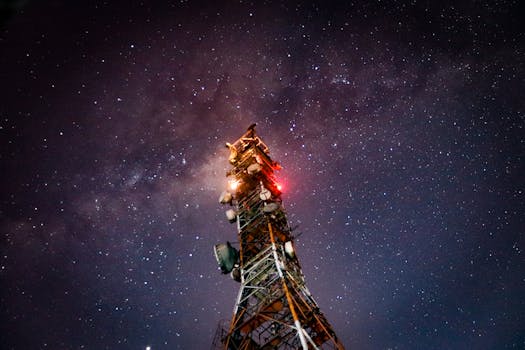
Starlink: Revolutionizing Global Internet Connectivity with Satellite Technology
Starlink, a satellite constellation developed by SpaceX, is poised to revolutionize the way we access the internet. With its ambitious goal of providing high-speed, low-latency internet connectivity to every corner of the globe, Starlink is set to bridge the digital divide and transform the way we communicate. As of now, Starlink has launched over 3,000 satellites into orbit and has begun providing internet services to select customers.
How Starlink Works
Starlink’s satellite constellation is designed to provide a network of interconnected satellites that can communicate with each other and with ground stations. Each satellite is equipped with a phased array antenna that allows it to steer its beam to connect with different users on the ground. This technology enables Starlink to provide a high-speed, low-latency connection, with speeds of up to 1 Gbps and latency as low as 20 ms.
The satellites are launched into low Earth orbit (LEO) at an altitude of approximately 550 kilometers. From this vantage point, the satellites can communicate with a large number of users on the ground, providing a wide range of coverage. Starlink’s ground stations, which are located around the world, are responsible for connecting the satellite network to the global internet backbone.
Benefits of Starlink
Starlink has the potential to bring numerous benefits to individuals, communities, and businesses around the world. One of the most significant advantages of Starlink is its ability to provide internet access to remote and underserved areas. Many parts of the world lack reliable internet connectivity, and Starlink’s satellite-based technology can help bridge this gap, enabling people to access essential services, communicate with loved ones, and participate in the global economy.
Starlink can also provide backup connectivity during natural disasters or network outages. In the event of a disaster, traditional communication networks can be disrupted, leaving people without access to vital information and services. Starlink’s satellite network can provide a reliable backup connection, ensuring that people can stay informed and communicate with emergency services.
Challenges and Limitations
While Starlink has the potential to revolutionize global internet connectivity, it also faces several challenges and limitations. One of the main concerns is the cost of the service. The initial cost of the Starlink dish and the monthly subscription fee may be prohibitively expensive for many individuals and communities, particularly in developing countries.
Another challenge facing Starlink is the issue of satellite congestion. As more satellites are launched into orbit, there is a growing concern about the potential for interference and congestion. This could lead to slower internet speeds and reduced connectivity.
Conclusion
In conclusion, Starlink is a groundbreaking technology that has the potential to transform the way we access the internet. With its high-speed, low-latency connection and global coverage, Starlink can provide internet access to remote and underserved areas, bridge the digital divide, and enable people to participate in the global economy. However, it also faces several challenges and limitations, including the cost of the service and the issue of satellite congestion. As Starlink continues to develop and expand its services, it will be important to address these challenges and ensure that the benefits of this technology are accessible to all.




